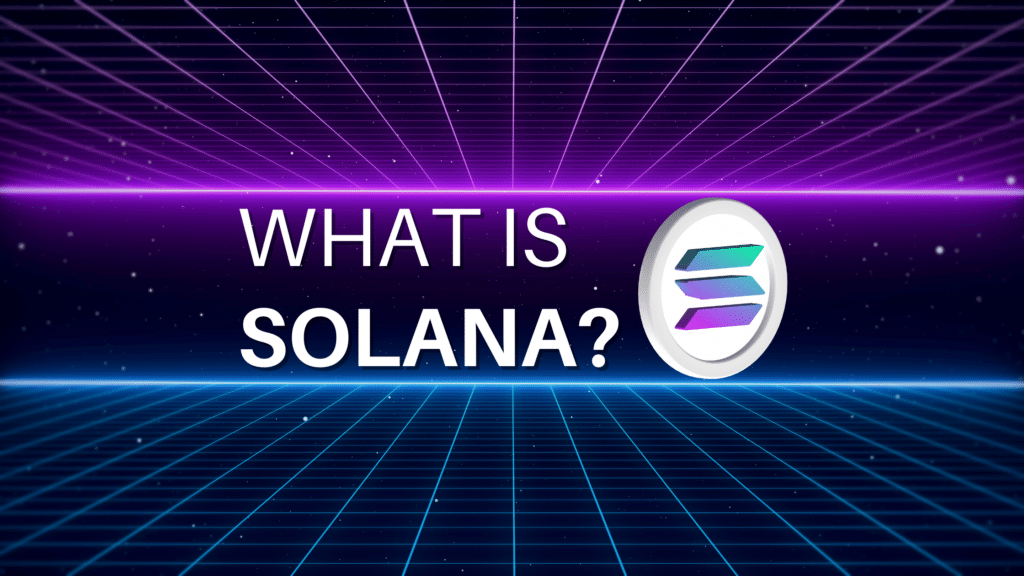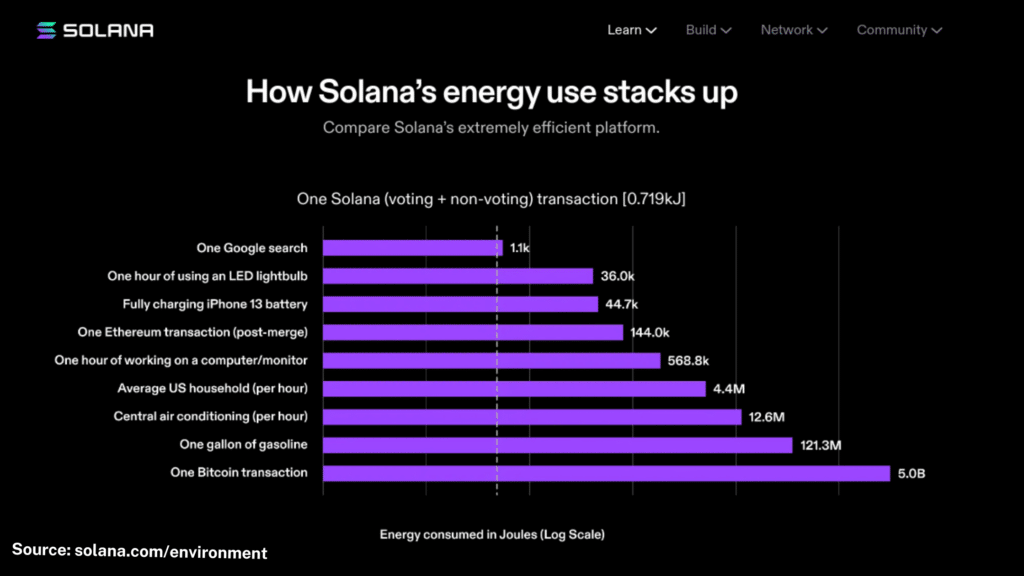What is Solana?
Solana is a blockchain platform. It’s the native protocol for the cryptocurrency SOL.
The Long Definition
Solana is a blockchain protocol developed by San Francisco-based Solana Labs. It is run as an open-source project by the Solana Foundation based in Geneva, Switzerland.
The protocol is designed to provide a high-performance environment for decentralized applications (dApps). As a result, it can process a high nu
mber of transactions at significantly lower fees than other protocols. This has made it one of the most promising projects in the blockchain space.
The cryptocurrency that runs on the protocol goes by the same name, Solana (SOL).

History of Solana
The Solana project was founded by two former engineers at Qualcomm, Anatoly Yakovenko and Greg Fitzgerald.
In November 2017, Yakovenko published a white paper detailing a concept that would make blockchain networks faster. Central to this concept was a new consensus mechanism, Proof of History (PoH).
PoH introduces a common clock for all no
des in the network. This allows the protocol to record a history of all transactions in the order that they occurred. That way, he argued, nodes can quickly verify the order and validity of transactions and synchronize with one another.
Fitzgerald created the first open-source prototype of Yakovenko’s blockchain in 2018. As a proof of concept, the protocol managed to process 10,000 transactions in just over half a second.
This encouraged the formation of a bigger team to work on the project. Over the next two years, the team improved on the concept, leading to the crossing of more milestones met. They initially called the project Loom but would later rebrand it to Solana.
Solana’s mainnet was officially launched in 2020. It was quite unique in the blockchain scene. Therefore, it generated a lot of hype. This caused the platform to grow rapidly. So rapidly, in fact, that its native coin Solana (SOL) had a 12000% increase in value in 2021.

How Does Solana Work?
Solana is a blockchain protocol. What sets it apart from ot
her protocols is its unique architecture. The blockchain is designed to operate as a network of clusters. Each cluster consists of multiple nodes that work together to process transactions. There is also a leader validator that is responsible for coordinating the activities of other validators in the cluster.
Clusters can communicate with one another about the state of the blockchain. This communication ensures validators in different structures are in sync. That way, the network as a whole stays in sync.
Overall, this architecture helps the blockchain achieve high throughput and low latency. Throughput refers to the speed of transaction processing. It’s typically indicated by the maximum number of transactions per second (tps) a protocol can handle. In this case, the blockchain can theoretically handle up to 50,000 tps.
However, it averages around 5,000 tps. This still makes it one of the most scalable public blockchains.
Consensus Mechanism
Solana also takes a novel approach to achieving consensus. The proto
col uses both Proof of Stake (PoS) and Proof of History (PoH).
PoS is a consensus mechanism that uses validators to confirm valid transactions. These validators stake (lock up) their crypto in the blockchain. Unlike other PoS blockchains, Solana doesn’t require a strict minimum amount of SOL for one to run a validator node. Any amount will do.
Validators on Solana work together in clusters to maintain the integrity of the data.
PoH is the other crucial part of Solana. PoH is a mechanism that allows nodes to agree on the order of events. It does this by adding verifiable and irrevocable timestamps to blocks. That way, there is an established sequence of events that validators can use to verify blocks and transactions.
The use of timestamps makes the process of verifying transactions faster. We can say that Solana uses PoH to complement its PoS consensus mechanism. That way, the blockchain can manage a high throughput.
What is Solana Used For
Being a blockchain protocol, Solana functions as the distributed ledger for SOL transactions. All native SOL transactions are processed and recorded on Solana.
The blockchain also has smart contract support. Smart contracts are self-executing agreements. This means they automatically execute when certain conditions are met. They are typically written as pieces of code and posted on the blockchain.
Smart contract support makes it possible to create applications on Solana. These kinds of applications are known as decentralized applications (dApps).
There are many different kinds of dApps on this blockchain. There are games, social media platforms, and trading/investing apps. The latter is part of a crypto-based financial sector known as decentralized finance (DeFi).
DeFi is a type of finance that has no middlemen. It’s decentralized and permissionless. Due to the high scalability of this blockchain, there’s an active attempt to create an active DeFi ecosystem on the protocol.
Solana also features NFT support. NFTs, or non-fungible tokens, are unique assets on a blockchain. The word “non-fungible” means that they cannot be swapped directly for one another.
The Solana (SOL) Token
Solana (SOL) is the native cryptocurrency of Solana. It is used to reward validators on the blockchain. Onchain transaction fees are also paid in SOL.
SOL is also widely available in centralized exchanges like Binance and Kraken. Here, traders and investors speculate on its price. This involves buying and selling the coin with the hope of making a profit.
Want to join the Dypto journey? Follow our socials!